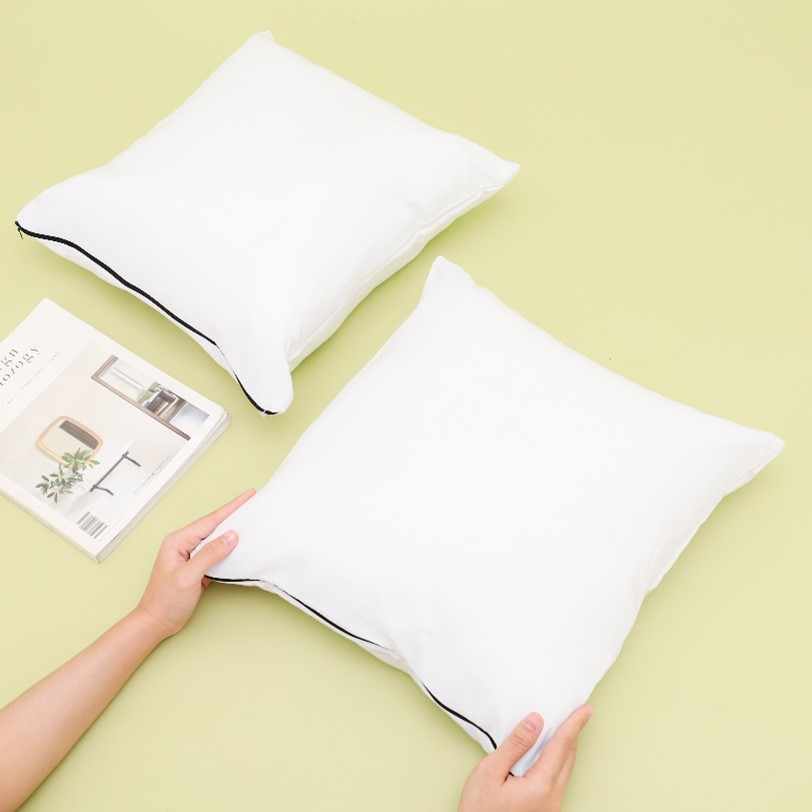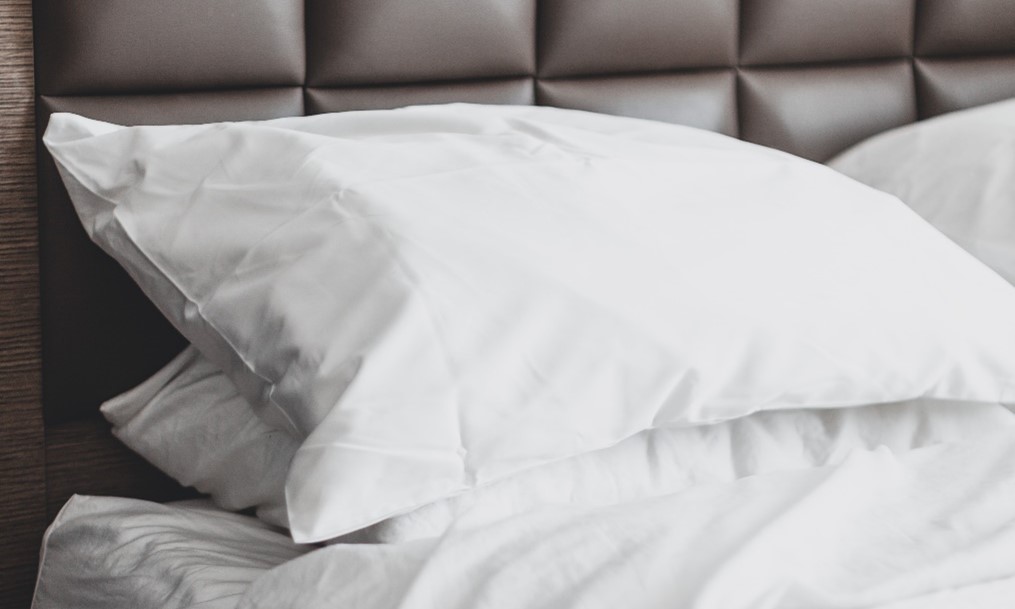Sleepy's use independent contractors for delivery services to our customers and during this time we want to support these small business owners and our customers to ensure safety for all. This may mean some interruptions to our normal delivery service and Free Old Mattress Removal which will be based on advice obtained from the Australian Government and the precautionary measures our delivery contractors determine necessary. If you are purchasing in one of our Sleepy’s showrooms or online, our staff will confirm the current status and keep you updated until your order has been delivered. If you are unable to accept the delivery due to illness or quarantine, you can arrange an alternative delivery time with the store. We are committed to continuing Sleepy’s amazing customer experience from the start of your mattress selection through to post purchase, delivery and beyond.
Read More
How Often Should You Change Your Pillow?
Read More
How Often Should You Change Your Pillow?
April 11th, 2023
Quality sleep is essential for overall physical and mental health, and optimising your bedroom environment and bedding can contribute to achieving better rest. One aspect to remember is maintaining and replacing your pillow when necessary to ensure it provides the proper support, cleanliness, and allergen-free sleeping surface. Experts suggest replacing pillows every 1 to 2 years and watching out for signs that indicate a pillow needs replacement, such as waking up with neck soreness, having difficulty finding a comfortable sleeping position, sagging or lumpy pillow surfaces, yellowing, and allergy flare-ups during sleep. Just like a mattress, a pillow’s lifespan and performance can be impacted by wear and tear over time.
Signs that You Should Replace Your Pillow
If you notice any of the following signs, then it’s probably time to go shopping for a new pillow:
- You wake up in the mornings with neck pain.
- Your shoulder muscles hurt in the morning.
- You have headaches in the morning or when trying to sleep.
- You experience an itchy throat, runny nose, watery eyes, skin rashes, or breathing difficulties when going to sleep.
- You notice small yellow spots on your pillows.
- Your pillow feels lumpy.
- Your pillow feels flat.
- You can fold your pillow in half.
Pillow Care and Replacement Guidelines

Prolonging the lifespan of a pillow requires regular care and cleaning. A pillow’s materials can influence sleep quality, care instructions and longevity, so it is essential to pay attention to the type of pillow you buy and follow the manufacturer’s care instructions.
Memory Foam Pillows
A memory foam pillow should not be put in a washing machine or dryer. Instead, it is best to spot-clean this pillow when necessary. You can thoroughly hand wash the pillow every 2 months with a gentle detergent and let it air dry. They should be replaced every 2 to 3 years.
Polyfoam Pillows
Like memory foam pillows, polyfoam pillows should be spot cleaned when needed, and hand washed in a gentle detergent every 2 to 3 months. They should be air-dried. Polyfoam pillows tend to last 2 to 3 years before needing to be replaced.
Down/Feather Pillows
While many down pillows can be machine washed, it’s important to note that high-quality ones should be dry cleaned. When machine washing a down or feather pillow, use the gentle cycle with warm water and mild detergent. It may be necessary to run the rinse cycle more than once to remove all the detergent. Once you’ve washed the pillows, you can air-dry them or put them in a dryer on a low setting for about 20 minutes. Wash these pillows every 3 to 6 months and replace them every 1 to 3 years. If the pillow doesn’t spring back to its standard shape after you fold it in half, it’s a sign that it’s time for a replacement.
Polyester and Down Alternative Pillows
If you have down alternative or polyester pillows, you can machine wash them using a gentle cycle, mild detergent, and cold water. You can dry them in a dryer on a low setting. It’s recommended to wash these pillows every 3 to 6 months. However, keep in mind that down alternative pillows usually last for about 1 to 2 years, while polyester pillows are less durable and may need to be replaced every 6 months to 2 years.
Latex Pillows
It’s important to avoid washing latex pillows in a washing machine. Instead, you can spot clean any stains and hand wash the pillow using warm water and a mild detergent every 2 to 3 months. Avoid submerging the pillow in water or wringing it dry. Instead, lay the pillow flat to air out. It’s recommended to replace your latex pillow every 2 to 4 years.
Buckwheat Pillows
When it comes to latex pillows, it’s crucial to avoid putting them in a washing machine. To clean them, you can spot clean any stains and use warm water with a mild detergent to hand wash the pillow every 2 to 3 months. It’s important not to submerge the pillow in water or wring it dry. Instead, let it air out by laying it flat. It’s advisable to replace your latex pillow every 2 to 4 years.
Pillowcases
Wash your pillowcases at least once a week. Different pillowcase materials have different care instructions, so check the pillow case manufacturer’s label for guidance. Replace pillowcases every 1 to 2 years.
When Should You Throw Out Pillows?
As mentioned earlier, most experts recommend replacing pillows every 1 to 2 years. However, there are some situations when you should consider replacing your pillows and how often you should change your pillow more frequently. For example, if you’re frequently sick or have allergies, replace your pillows every 6 months to a year. Additionally, if you’ve recently moved or had a major renovation in your home, it’s a good idea to replace your pillows to avoid any potential mould or mildew growth.

What Happens if You Don’t Change Your Pillow?
Neglecting to replace your pillows regularly can result in a host of problems, such as allergic reactions, breakouts, and neck pain. Over time, an old pillow can accumulate allergens such as dust mites, fungus, mould, dead skin cells and pet dander. Exposure to these allergens while sleeping can lead to a runny or stuffy nose, itchy skin, and irritated eyes, which can negatively impact sleep quality. In addition, pillowcases may trap face and hair oils, sweat, drool, and other dirt, which can cause yellow stains on the surface of your pillow. These substances may clog your pores and trigger acne breakouts or rashes for people with sensitive skin.
Most importantly, pillows are designed to support your neck and head as you sleep, relieve muscle tension, and promote healthy spinal alignment. A pillow that has sagged or flattened over time can no longer provide your head with the necessary support, leading to soreness or feeling unrefreshed upon waking up. Therefore, replacing your pillows regularly is essential to avoid these issues and ensure a good night’s sleep.
FAQ
How Do You Know When You Need to Replace Pillows?
If you notice any of the following signs, then it’s probably time to go shopping for a new pillow:
- You wake up in the mornings with neck pain.
- Your shoulder muscles hurt in the morning.
- You have headaches in the morning or when trying to sleep.
- You experience an itchy throat, runny nose, watery eyes, skin rashes, or breathing difficulties when going to sleep.
- You notice small yellow spots on your pillows.
- Your pillow feels lumpy.
- Your pillow feels flat.
- You can fold your pillow in half.
How Often Should Pillows Be Washed?
Most pillows should be washed every 3 to 6 months, although this will depend on the type of pillow and the manufacturer’s instructions. Be sure to check the care label on your pillow before washing it.
How Often Should Pillowcases Be Replaced?
Pillowcases should be replaced every 1 to 2 years.
How Often Should I Change My Pillowcase to Prevent Acne?
To prevent acne, it’s recommended that you change your pillowcase at least once a week. This is because oil, dirt, and bacteria from your hair and face can transfer onto your pillowcase and back onto your skin, leading to breakouts. If you have oily or acne-prone skin, change your pillowcase more frequently.
How Often Should Pillowcases Be Washed?
To maintain a hygienic sleeping environment, it’s recommended to wash your pillowcases at least once a week. However, it’s important to note that different materials require different care instructions, so it’s best to refer to the manufacturer’s label for guidance. When washing your pillowcases, use a gentle detergent and avoid using bleach or fabric softener, as these can irritate the skin. If you suffer from allergies, it’s advisable to wash your pillowcases more frequently to reduce the number of allergens on them. By taking care of your pillowcases, you can ensure a clean and comfortable sleeping surface for a good night’s rest.
The verdict on how often should you change your pillow
In conclusion, regular pillow maintenance, washing, and replacement are essential for hygiene and sleep quality. Most experts recommend replacing pillows every 1 to 2 years and washing them every 3 to 6 months. The exact frequency will depend on the type of pillow and the manufacturer’s instructions. Additionally, pillowcases should be washed at least once a week and replaced every 1 to 2 years to prevent acne and reduce allergens. If you notice any signs that your pillow needs to be replaced, such as neck pain or a flattened shape, it’s time to go shopping for a new one. By following these guidelines, you can ensure that your pillows provide the necessary support and comfort for a good night’s sleep.

